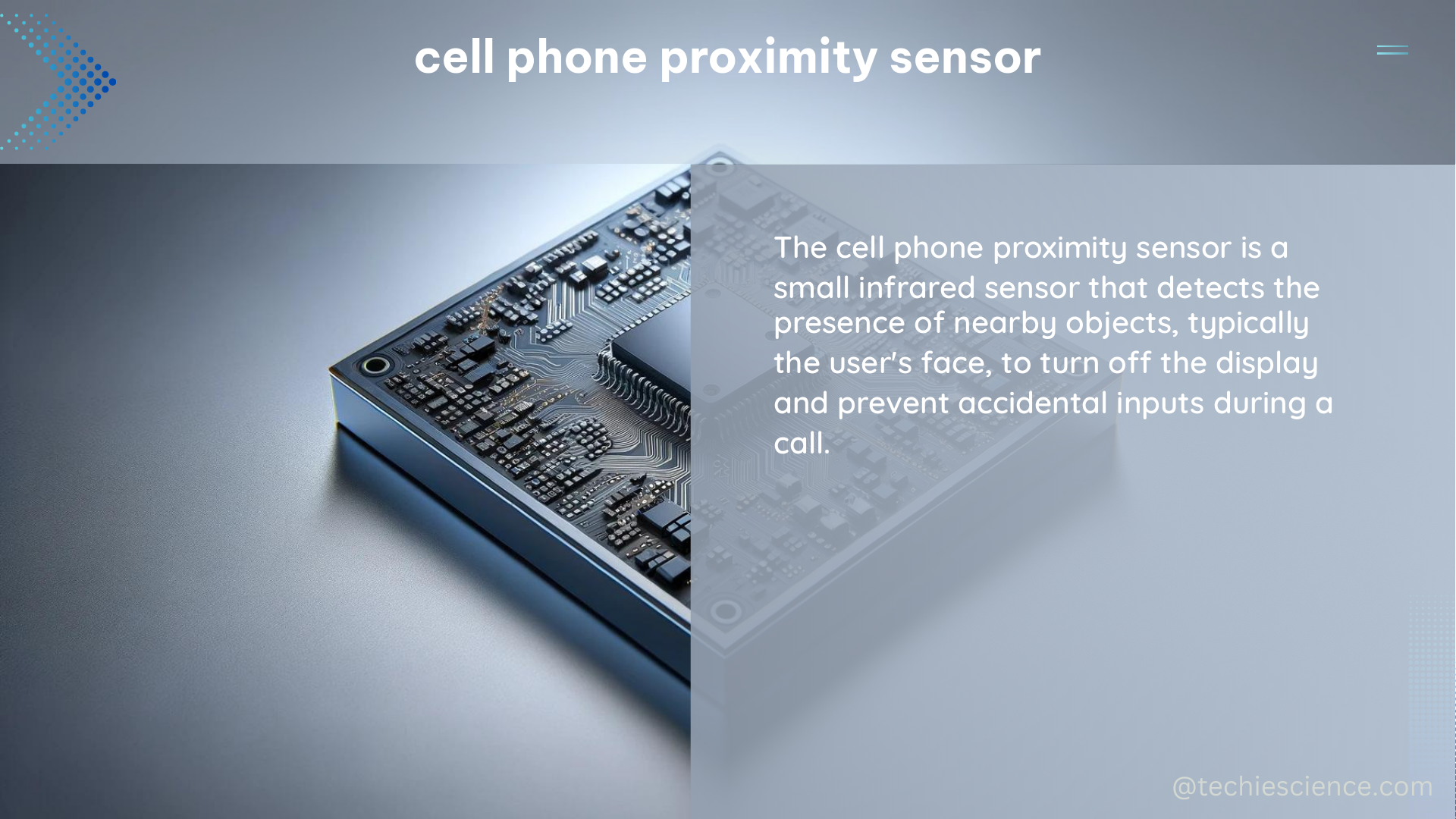The cell phone proximity sensor is a crucial component in modern smartphones, enabling various functionalities such as screen dimming, touchscreen disabling, and gesture-based controls. This advanced technology has evolved significantly over the years, with capacitive and infrared sensors being the most common types used in current devices.
Understanding Capacitive Proximity Sensors
Capacitive proximity sensors work by detecting changes in an electric field, which can be influenced by the presence of nearby objects or human bodies. These sensors typically consist of a conductive plate or electrode that forms a part of an electronic circuit. When an object, such as a user’s finger or hand, comes close to the sensor, it alters the electric field, causing a change in the sensor’s capacitance. This change in capacitance is then detected and processed by the device’s microcontroller, enabling various proximity-based functionalities.
Technical Specifications of Capacitive Proximity Sensors
- Detection Range: Capacitive proximity sensors in cell phones typically have a detection range of 1-10 cm, with some high-end devices offering a more precise range of 1-5 cm.
- Response Time: The response time of capacitive proximity sensors can vary from 1-100 milliseconds, depending on the sensor design and the device’s processing capabilities.
- Sensitivity: The sensitivity of capacitive proximity sensors can be adjusted to accommodate different user preferences and environmental conditions. Higher sensitivity can detect smaller changes in capacitance, while lower sensitivity can help reduce false triggers.
- Power Consumption: Capacitive proximity sensors generally have a low power consumption, typically in the range of 1-10 milliwatts, making them suitable for battery-powered devices.
Infrared Proximity Sensors

Infrared proximity sensors, on the other hand, work by emitting and receiving infrared light to detect the presence and distance of nearby objects. These sensors typically consist of an infrared LED (light-emitting diode) as the emitter and a photodiode or phototransistor as the receiver. When an object is detected, the sensor measures the time it takes for the infrared light to reflect off the object and return to the receiver, allowing it to calculate the distance.
Technical Specifications of Infrared Proximity Sensors
- Detection Range: Infrared proximity sensors in cell phones can typically detect objects within a range of 1-50 cm, with some high-end devices offering a more precise range of 1-20 cm.
- Response Time: The response time of infrared proximity sensors can vary from 1-100 milliseconds, depending on the sensor design and the device’s processing capabilities.
- Accuracy: Infrared proximity sensors can provide more accurate distance measurements compared to capacitive sensors, with an accuracy typically ranging from 1-5% of the measured distance.
- Power Consumption: Infrared proximity sensors generally have a higher power consumption compared to capacitive sensors, typically in the range of 10-100 milliwatts, due to the energy required to power the infrared LED.
Integrated Sensor Capabilities
Cell phone proximity sensors can be integrated with other sensors, such as accelerometers and gyroscopes, to provide more comprehensive data on user interactions and device orientations. This integration enables advanced features, including:
- Gesture-based Controls: Proximity sensors can be used to track a user’s hand movements, enabling gesture-based controls for various applications, such as media playback, volume adjustment, and screen navigation.
- Context-aware Computing: Proximity sensors can monitor a user’s proximity to other devices, enabling context-aware computing features, such as automatic device pairing, content sharing, and environmental control.
- Motion-based Gaming and AR/VR: The integration of proximity sensors with motion sensors, such as accelerometers and gyroscopes, can enable more immersive gaming experiences and augmented reality (AR) or virtual reality (VR) applications.
- Health Monitoring: Proximity sensors can be used to monitor a user’s proximity to other objects or devices, enabling applications related to health and wellness, such as fall detection, activity tracking, and proximity-based alerts.
Sensor Fusion and Advanced Applications
Cell phone proximity sensors can be further enhanced through sensor fusion, which involves combining data from multiple sensors to provide more accurate and comprehensive information. For example, by integrating proximity sensors with other sensors like touch, pressure, and ambient light, cell phones can offer advanced features such as:
- Adaptive User Interfaces: Proximity sensors can work in conjunction with touch and pressure sensors to optimize the user interface, adjusting the size and placement of on-screen elements based on the user’s hand position and grip.
- Proximity-based Automation: Proximity sensors can be used to detect the user’s proximity to the device, enabling automated actions such as screen dimming, touchscreen disabling, and voice assistant activation.
- Environmental Sensing: Combining proximity sensors with ambient light and temperature sensors can provide valuable data for applications related to smart home automation, energy management, and environmental monitoring.
- Biometric Authentication: Proximity sensors can be used in combination with other biometric sensors, such as fingerprint or facial recognition, to enhance security and personalization features on cell phones.
Conclusion
Cell phone proximity sensors are advanced components that have evolved significantly over the years, offering a range of technical specifications and integration capabilities for various applications. By understanding the underlying principles, technical details, and advanced use cases of these sensors, developers and users can unlock the full potential of proximity-based functionalities on modern smartphones.
References:
- “Measuring objective and subjective well-being: dimensions and methods” – Springer (2020)
- “Digital Habit Evidence” – Duke Law Scholarship Repository (2022)
- “FY24 NDAA Conference Report” – Senate Armed Services (2023)
- “Wireless E911 Location Accuracy Requirements” – FCC (2014)
- “DEPARTMENT OF DEFENSE STANDARD PRACTICE” – CADE (2022)

The lambdageeks.com Core SME Team is a group of experienced subject matter experts from diverse scientific and technical fields including Physics, Chemistry, Technology,Electronics & Electrical Engineering, Automotive, Mechanical Engineering. Our team collaborates to create high-quality, well-researched articles on a wide range of science and technology topics for the lambdageeks.com website.
All Our Senior SME are having more than 7 Years of experience in the respective fields . They are either Working Industry Professionals or assocaited With different Universities. Refer Our Authors Page to get to know About our Core SMEs.